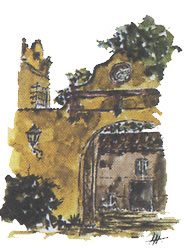Determination of fungal damage to military products (MIL-STD-810H: 2019 Standard. Department of Defense. Test Methods Standard. Environmental Engineering Consideration and Laboratory Tests. U.S. Army and Evaluation Command).
Test not accredited in our laboratory.
MIL-STD-810H, Chapter 508.8, describes procedures for evaluating the potential for fungus growth on military materials to determine whether the materials or combinations of materials support fungal growth, and if possible, to determine the dominant species present in their development; how quickly fungus develops on the material; how the materials are affected and safe to use after fungal growth; whether the materials can be stored in field environments; and whether there is a simple cleaning procedure.
Fungi can cause direct attack on non-resistant materials, causing the material to break down by using them as nutrients, deteriorating it and affecting its physical properties. Natural materials that may be sensitive to fungal attack include: cellulosic materials, animal or vegetable adhesives, fats, oils, many hydrocarbons, and leather. Synthetic materials sensitive to fungal attack include PVC formulations, some polyurethanes, plastics containing organic fillers of laminated materials, paints and varnishes containing sensitive components. Fungi can also cause indirect attack on resistant materials when they develop in surface accumulations of dust, grease, perspiration products, and other contaminants, damaging the underlying material, even if it is resistant to direct attack by the fungi. Metabolic wastes (e.g., organic acids) excreted by fungi can cause corrosion of metals, stain, or degrade plastics and other materials. In addition, in some special situations they can cause physical interference, such as in the case of electronic or optical systems, affect human health (e.g. allergies), or affect the aesthetics of materials.
In order to carry out growth capacity tests on military materials, they are sprayed with a spore suspension of five different fungi and kept at a combination of temperature and humidity critical for microbial development. This is achieved using a previously decontaminated chamber, equipped with a humidity and temperature sensor (temperature of 30 ± 2ºC and relative humidity of ≥ 90% and <100%). The minimum duration of the test is 28 days to allow complete germination of the fungi inoculated on the test product, causing, where appropriate, the decomposition of carbon molecules and the consequent degradation of the material. To observe some indirect effects and physical interferences, the evaluation can be extended up to 84 days.
Testing uses fungi that are known to degrade a wide variety of materials commonly used in the construction of military products, are universally distributed, stable and have a biosafety level 1. It should be noted that the product may contain other microorganisms on its surface and when inoculated with the test fungi both will grow and compete for available nutrients. Additional fungi may be used as specified by the client and have been selected based on prior knowledge of their ability to degrade specific materials.
En las pruebas se utilizan hongos para los que se conoce su capacidad para degradar una amplia variedad de materiales comúnmente utilizados en la construcción de productos militares, que poseen una distribución universal, son estables y poseen un nivel 1 de seguridad biológica. Debe tenerse en cuenta que el producto puede contener otros microorganismos en su superficie y al inocularse con los hongos de prueba ambos se desarrollarán y competirán por los nutrientes disponibles. Se pueden utilizar hongos adicionales indicados por el cliente, y que hayan sido seleccionados según el conocimiento previo de su capacidad de deterioro de materiales específicos.
The five species of fungi recommended by this standard are: Aspergillus flavus (non-aflatoxin producer), Trichoderma virens, Talaromyces pinophilus (syn. prev. Penicillium funiculosum), Chaetomium globosum, y Aspergillus brasiliensis (syn. prev. A. niger).
For the test, a new product is recommended, but used products can be used, which must be cleaned 72 hours in advance by moistening with water or following the product instructions. In the test to check that the environmental conditions of temperature, humidity and ventilation are adequate, control materials made of 100% cotton fabric are used that have been moistened in a solution of salts and glycerol suitable for achieving the development of fungi. The test control must be checked after 7 days and verified to increase after 14 days, to check that the environmental conditions are adequate, with growth being obtained on at least 90% of its surface. If these conditions are not obtained with the control product, the test would not be valid and must be repeated.
At the end of the test, if fungal growth exists, it must be analyzed to determine the species of fungus that developed, observe the effect on the color or other visual alteration of the test product. The visible effects are rated between 0 and 4 depending on whether there is no development (0), there are traces of growth (1), slight growth (2), medium growth (3) or abundant growth (4). The existence of discoloration or other visual degradation caused by growth on the test material must also be reported.



